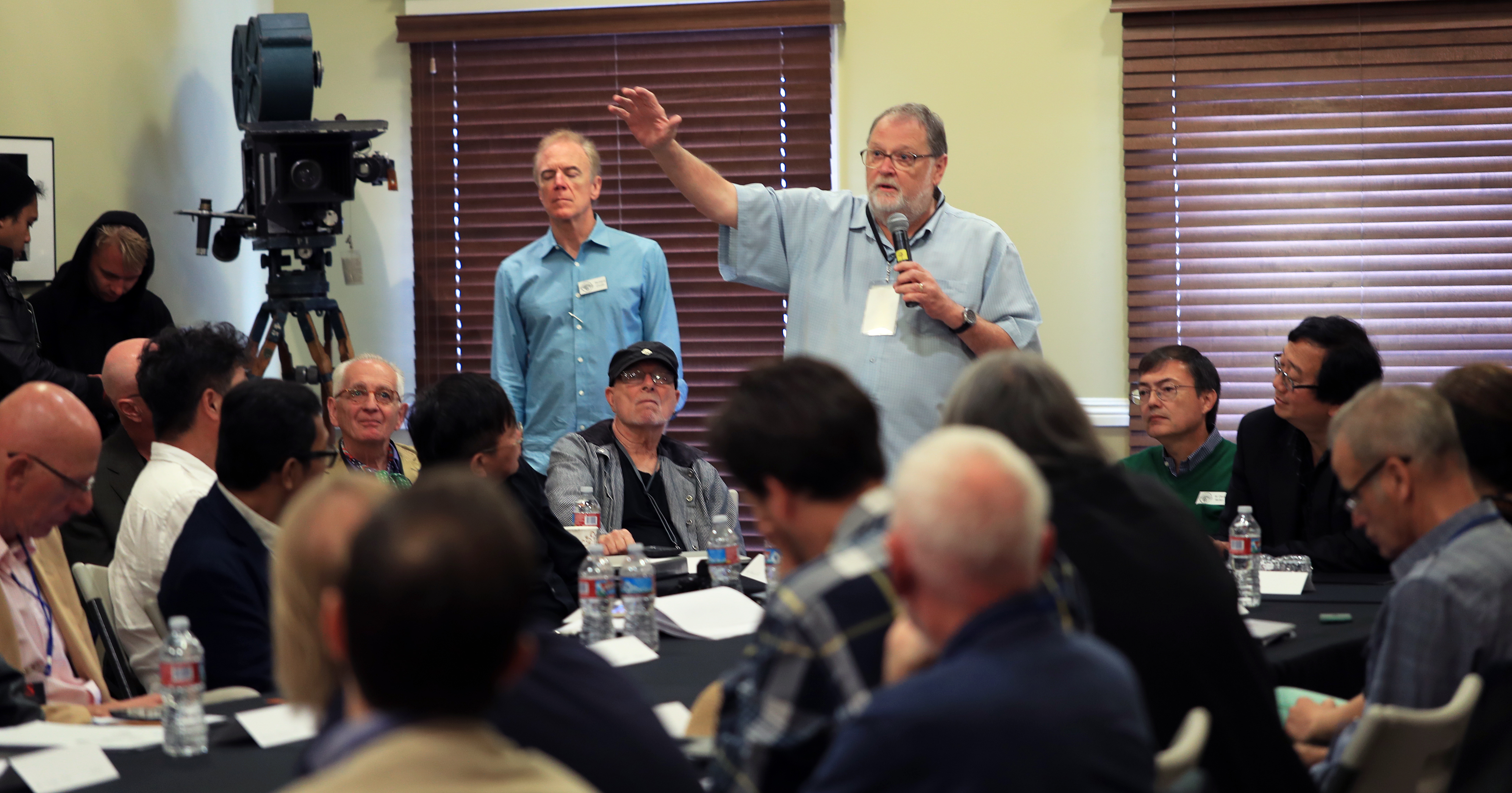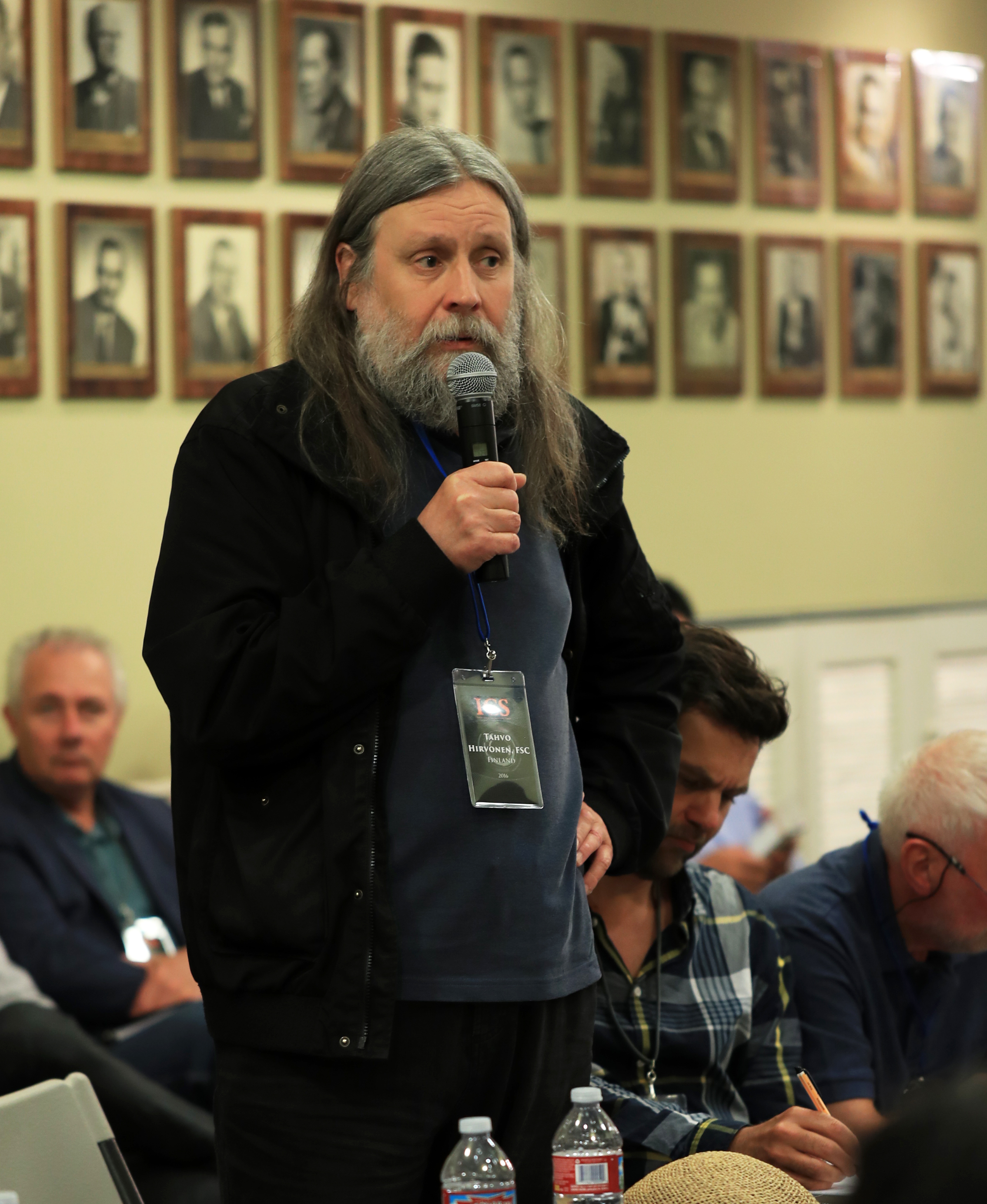
ICS 2016 - Part I: The Future of the Cinematographer
The International Cinematography Summit offered a unique opportunity for motion picture professionals to discuss and demonstrate ideas.
ICS2016
For this unique four-day event, the American Society of Cinematographers invited peers from around the world to meet in Los Angeles, where they will discuss professional and technological issues and help define how cinematographers can maintain the quality and artistic integrity of the images they create.

The first discussion item for the ICS 2016 was the “Future of Cinematography,” in the context of the democratization of technology. Richard Andry, AFC; David Mullen, ASC and Ron Johanson, ACS started the discussion that quickly opened up to the entire group.
Andry noted that, in the past, he has expressed a great deal of pessimism about the topic. “Having had bad experiences, I wrote that we, as cinematographers, were going to disappear,” he admitted.
Mullen agreed that cinematographers are facing “a tremendous amount of change.”

“There have always been times of intense technological change,” he continued. “The only thing different from previous times is that they lasted only a few years. But I don’t think it will ever stabilize. It’s a Wild West that will never settle down.”
“Now that we’re expected to shoot 50, 70 set-ups a day, there is no way to have control,” Mullen said. “We’re trying to exert control over a process that’s gotten faster, more condensed, and I think we’ll keep struggling with that. Directors expect to shoot more coverage than ever. Because cameras allow us to shoot in more available light, we’re often asked to shoot in available light even when it isn’t appropriate.”
Roberto Schaefer, AIC, ASC, noted that because cameras are capturing in 4K and 8K, the editors – sometimes with the blessing of the director – are frequently reframing shots and creating singles from two-shots. “They’re also recoloring in the Avid before the director even gets there,” Schaefer described. “Then the director believes it’s the image we created. When you get in the DI, he’s surprised when we say, ‘It’s not our image.’ The technology of the cameras and editorial is taking that away from us, and it’s a difficult thing to address. How do we get that control back?”
Another cinematographer noted that “editors shouldn’t be making aesthetic decisions about composition unless it’s to solve a storytelling problem. If they re-compose the image or color, they are crossing the line into our area.”
Part of the solution is education. “We should be teaching why the camera in a certain position is the best one,” added another attendee.
Curtis Clark, ASC — who heads the ASC Technology Committee — said that, “one common denominator is creative collaboration.”
“People working together have mutual respect and understand each other’s role. I understand the idea that when the director asked the cinematographer to look at the choreography of the set, through the eyepiece, that was the epitome of trust. The word ‘trust’ has to come back. We have to integrate collaboration into these new workflows that are so much more open. Everyone has to be on the same page, and that starts in the preproduction phase.”
He added that the award-winning Academy Color Encoding System (ACES), for example, has been “a huge godsend to protect the creative intent so nobody can pour secret sauce transforms on it and throw away the original information. That’s why the DP needs to understand all the mechanisms and how they work together, so he can direct the photography, working with the trust of the director and producer. That’s their best bet to maintain the creative content. It shouldn’t just be an accident they discover along the way.”

Tony Richmond, BSC added that, because lenses fit digital cameras, that “fountain of knowledge in terms of what lenses to use” is the cinematographer’s “ace card” at the moment. “That’s one way to get the respect back,” he said.
“Being young, it's a very different experience,” noted Fernando Vilanova, SVSC, “We’re still more concerned about using the proper tools and we need to find a way to use it in our favor. The biggest problem for us is that producers want an immense library to choose from, so we’re generating too much content. We want to have the time to go through that creative process and make decisions, but it’s an 8-to-5 job, just delivering what is expected, with little time to prepare, find sources of information or propose ideas. For us, it’s important that we rescue the focus of maintaining a high creative level.”
He wasn’t alone in bemoaning the struggle to keep artistic standards high. Zhao Xiaoding, CSC noted, “We have less time in pre-production, due to new technology. In post production, the directors that can change the image without any consideration of the entire picture. Artistically, that’s a disaster. We have to keep on talking about this and show that our knowledge offers more options and understanding for the audiences.”
Technology presents another danger, said Ron Johanson, ACS: “We have to be careful not to become technocrats. At the end of the day, we’re artists. The way to get control back is to understand the technology and be well versed in it, but to convey to the people on the set that what we do is art. We’re not just pushing buttons to record an image.”
Guillermo Navarro, ASC concluded that the cinematographer’s role is, indeed, “in crisis.”
“There’s mention of the democratization of the process, not to be confused with vulgarization of the process run by ignorance,” he said. “We were focused on film language, and it’s our responsibility to recover that. Enabling ignorance is the worst thing that can happen to any industry. It’s not an engineering race. It has to do with the origins of what we do. Being part of the creative process is the only way we can survive.”






